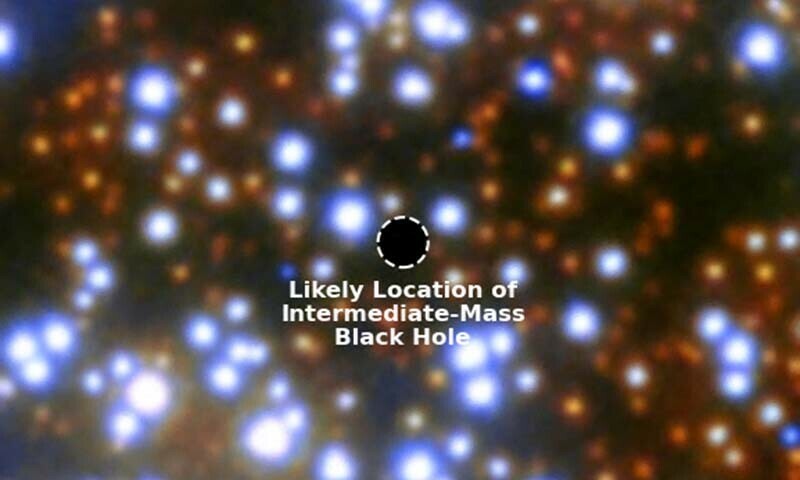PARIS: Astronomers announced on Wednesday that they have discovered compelling evidence of a medium-sized black hole, an elusive category that has puzzled scientists for years.
Black holes are abundant in the universe, ranging from supermassive ones at the centers of galaxies to smaller ones around 100 times the mass of the Sun. However, finding black holes that fall between these two sizes has been a significant challenge, often referred to as the “missing link” in their evolutionary understanding.
To shed light on this mystery, an international team of researchers focused on Omega Centauri, the largest star cluster in the Milky Way, located about 18,000 light-years from Earth. They observed “something peculiar,” according to Maximilian Haeberle, a PhD student at Germany’s Max Planck Institute for Astronomy.
In the dense cluster of 10 million stars, seven stars were moving much too fast. Normally, such speeds would propel the stars out of the cluster, but an invisible force seemed to be pulling them back.
Simulations of these stars’ movements suggested the presence of a black hole at the center of Omega Centauri with a mass of approximately 8,200 Suns. This discovery places it in the elusive intermediate range of black holes.
Supermassive black holes, like the Milky Way’s Sagittarius A*, have more than 100,000 solar masses and can be millions of times the mass of the Sun. In contrast, stellar-mass black holes, formed from supernova explosions of giant stars, have masses between five to 150 Suns.
However, there is a significant gap between these two categories. Intermediate-mass black holes (IMBH) have been theorized but seldom observed. Black holes are difficult to detect as they do not emit light. One method of identifying them is by observing the energy released when they consume gas and dust. However, IMBHs consume less gas, making them even harder to spot, Haeberle explained.
Discovering an IMBH “is like finding the first evidence for Bigfoot — people are going to freak out,” said study co-author Matthew Whittaker of the University of Utah.
Haeberle hopes this discovery will end nearly two decades of debate among astronomers about the existence of an IMBH in Omega Centauri.
The researchers analyzed 20 years of publicly available data from the Hubble Space Telescope, tracking the movements of 1.4 million stars in Omega Centauri. They ruled out other possible explanations for the fast-moving stars, such as multiple stellar-mass black holes or binary star systems, solidifying the case for the intermediate-mass black hole.



